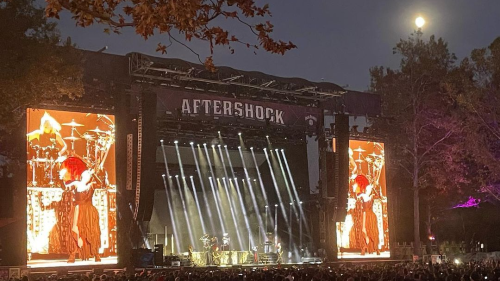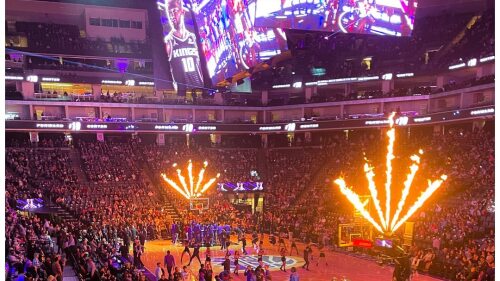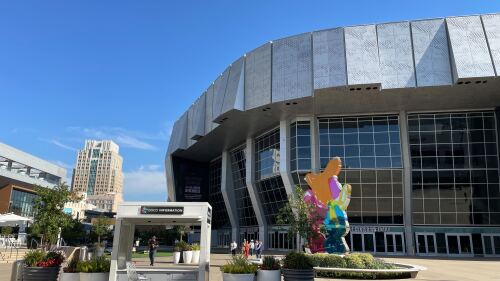The city of Sacramento was incorporated on Feb. 27, 1850, following the development of the community around Sutter’s Fort after John Sutter’s arrival to the area in 1839. Now that 173+ years have passed, the city and its streets are chock-full of vibrant history.
It’s safe to say that over the years, the city has been touched by countless historical figures and happenings — many of which have shaped the names of its buildings, parks, and streets. In this guide, we’re delving into the history of Sac’s streets — specifically how they were named.
Want to learn more about our city streets’ history? Check out this book by former Sacramento Bee writer Carlos Alcala, which we found incredibly helpful (and hilarious) during our research.
Downtown
Bustling with businesses and restaurants, Downtown features an alphanumeric roadway setup — a series of streets in alphabetical order, with perpendicular streets in numerical order. The system makes it easy to navigate, for the most part. However, there are some exceptions to the alphanumeric rule.
Capitol Mall — The stretch of Capitol Avenue as soon as you enter the city got its name as part of a larger redevelopment plan meant to emphasize the State Capitol as the “gateway to the city.”
Front Street — Why is it Front Street and not First Street? Because it’s at the front of the river. Yeah, our minds are blown too.
Broadway — Broadway actually was Y Street until 1938, when a group of business owners asked to have the road renamed. Apparently the moniker was a hit among locals, who referred to the street as Broadway even before city council cast an official vote on the matter.

This fountain is all that remains of the Alhambra Theatre.
Photo via Wikimedia Commons
East Sacramento
The lively, mostly-residential neighborhood of East Sac retains much of Downtown and Midtown’s number-letter roadway design, but with a few twists.
Alhambra Boulevard — Situated where you would expect to find 31st Street, the street is named for the long-since-replaced-by-a-Safeway Alhambra Theatre.
Folsom Boulevard — Up until the 1910s, Folsom Boulevard was actually parts of two different roads (Schley Avenue and M Street) but renamed because it stretches all the way to the foothill suburb.
Bear Flag Way — This small strip is named for the Bear Flag Revolt of 1846, where American settlers revolted against General Mariano Vallejo, leading to the creation of California’s first flag.
Arden-Arcade
Nestled between Sacramento and Carmichael, Arden-Arcade is technically unincorporated Sacramento County — which is surprising considering what a vibrant and fleshed out part of the community it is.
Alta Arden Expressway — Alta means “upper” in Spanish, and this road sits just north of Arden Way — while also providing the best entrance to the nearby In-N-Out, as long as you’re traveling west.
Howe Avenue — Howe and many of its nearby roads (like Bell, Fulton, Marconi, and Watt) all take their names from some of history’s great inventors. In this instance, it’s Elias Howe, inventor of the modern sewing machine.
Fair Oaks Boulevard — While the origins of this street name are unclear, author Carlos Alcala suggests this street, and the community it shares a name with, are meant to memorialize a Civil War battle known as the Battle of Fair Oaks or Battle of Seven Pines.
Land Park
This quaint neighborhood — which takes its name from William Land Park — is home to a variety of activities, including the Sacramento Zoo and Fairytale Town.
Fruitridge Road — In 1882, a man named Erskine Greer bought 100 acres of land near what is now 44th Street, and turned it into a large garden, known as Fruit Ridge Home.
Del Rio Road — In the late 1800s and early 1900s, Del Rio Road led to Rancho Del Rio, a horse farm owned by Theodore Winters (after whom the town of Winters is named).
Sutterville Road — In a not-so-surprising twist, Sutterville gets its name from John Sutter — the man who established Sutter’s Fort.
Pocket-Greenhaven
Known for its semi-circular shape, this quiet residential neighborhood is snuggled just south of Land Park.
Freeport Boulevard — Around 1862, the Freeport Railroad Co. set up shop south of Old Sac’s ports so that boats coming up the river from San Francisco could unload their shipments without having to pay taxes to the city.
Riverside Boulevard — No, this boulevard isn’t named for running parallel to either of Sacramento’s rivers, but instead operated as a toll road for the Riverside Hotel in the 1870s.
Florin Road — Until World War II, the town of Florin served as a major agricultural hub for the region, and lent its name to several roads, including Elk Grove-Florin Road and Florin-Perkins Road.












